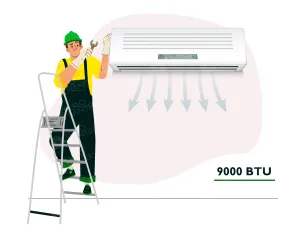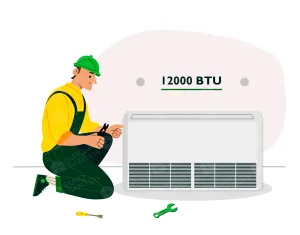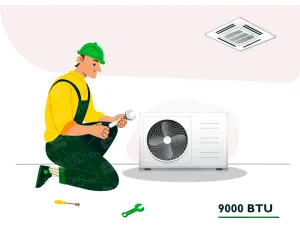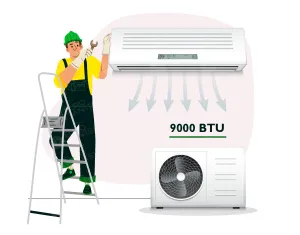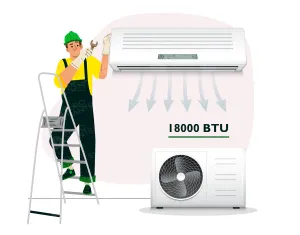Installation of the indoor unit of the air conditioner in Chisinau
The installation of the indoor unit of an air conditioner is a crucial step in ensuring optimal indoor climate control and comfort. Proper installation not only affects the performance and efficiency of the air conditioning system but also impacts the overall air quality and energy consumption within the space. In this detailed guide, we will explore the essential steps, considerations, and best practices involved in the installation of the indoor unit of an air conditioner.
Pre-Installation Preparation
Before initiating the installation process, thorough preparation is necessary to streamline the installation and ensure its success:
Site Assessment: Evaluate the designated location for installing the indoor unit, considering factors such as room size, layout, and proximity to electrical outlets and the outdoor unit.
Electrical Readiness: Verify the availability of sufficient electrical power near the installation site to support the indoor unit's power requirements. Ensure compliance with local electrical codes and safety standards.
Accessibility and Safety: Prepare the workspace by clearing obstacles, ensuring adequate ventilation, and implementing safety measures for the installation team.
Steps for Installing the Indoor Unit of the Air Conditioner
1. Mounting Preparation
Wall Preparation: Clean the mounting surface thoroughly to remove dust, dirt, and debris. Ensure the wall is structurally sound and capable of supporting the weight of the indoor unit.
Positioning: Determine the optimal height and position for mounting the indoor unit based on manufacturer guidelines and room layout considerations.
2. Installation of the Indoor Unit
Mounting: Securely mount the indoor unit to the wall using appropriate brackets or mounting hardware. Ensure the unit is level and securely attached to prevent vibration and ensure stability during operation.
Piping and Drainage: Connect the refrigerant pipes and drainage hoses according to manufacturer specifications. Insulate pipes as necessary to prevent energy loss and condensation issues.
3. Electrical and Control Wiring
Electrical Connection: Connect the indoor unit to the electrical supply, ensuring all connections are securely fastened and insulated. Follow wiring diagrams provided by the manufacturer for correct installation.
Control Wiring: Connect the control wiring between the indoor and outdoor units, ensuring proper communication for seamless operation and control of the air conditioning system.
4. Testing and Commissioning
Functional Testing: Test the indoor unit to ensure all functions, including cooling, heating, fan operation, and thermostat control, are operating correctly.
Airflow and Temperature Calibration: Adjust airflow settings and calibrate the thermostat to achieve desired temperature settings and optimal indoor comfort.
5. Insulation and Finishing
Insulation: Insulate refrigerant pipes and electrical wiring to prevent heat loss, condensation buildup, and potential damage.
Aesthetic Finish: Complete the installation with a focus on aesthetics, ensuring any visible wiring or components are neatly concealed for a professional appearance.
Maintenance and Ongoing Care
To maintain the performance and efficiency of the indoor unit over time, regular maintenance and care are essential:
Filter Maintenance: Clean or replace air filters regularly to ensure optimal airflow and indoor air quality.
Condensate Drainage: Inspect and clear the condensate drainage system to prevent blockages and potential water damage.
Professional Servicing: Schedule annual maintenance checks by qualified technicians to inspect components, check refrigerant levels, and address any issues before they escalate.
Conclusion
The installation of the indoor unit of an air conditioner requires meticulous planning, technical expertise, and adherence to safety and manufacturer guidelines. By following the steps outlined in this guide and investing in professional installation and maintenance, homeowners and businesses can ensure their air conditioning systems operate efficiently, providing comfortable indoor environments year-round. Proper installation not only enhances cooling and heating performance but also contributes to energy savings and prolonged equipment lifespan, making it a worthwhile investment in indoor comfort and climate control.
